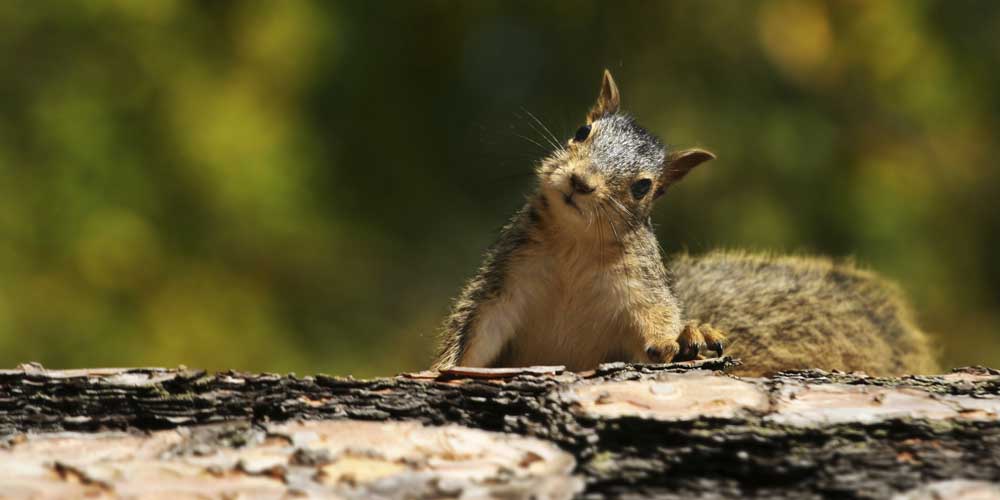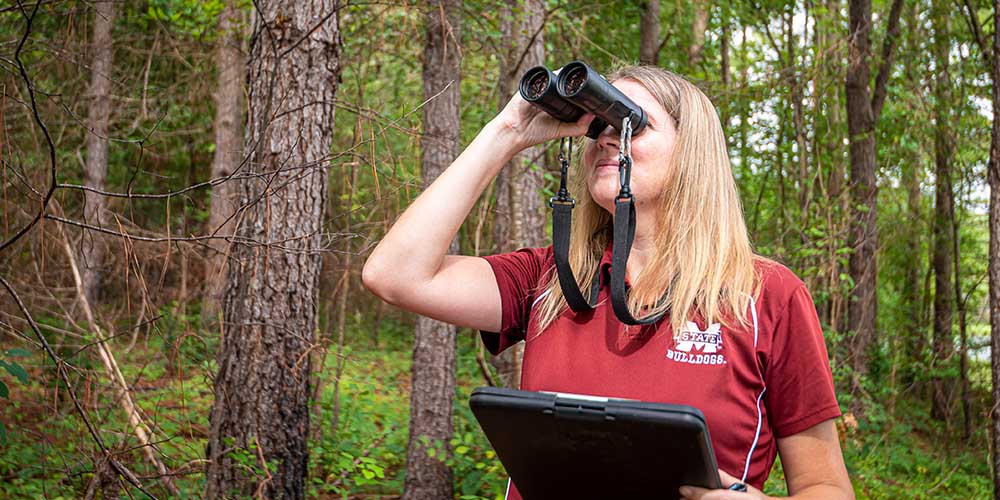Related Stories
Habitat Stories

MSU joins Urban Wildlife Information Network
FWRC researchers teamed up with the Urban Wildlife Information Network (UWIN) to discover the secret life of animals in Mississippi’s urban neighborhoods. Dr. Adam Rohnke, senior wildlife extension associate, and Dr. Dana Morin, assistant professor of wildlife ecology, both in the Department of Wildlife, Fisheries and Aquaculture, are working with UWIN, Master Naturalist volunteers to learn what urban mammals are doing in Mississippi. Their research will examine urban wildlife on the front lines of human-wildlife interaction. The researchers—by using remote-triggered game cameras— hope to identify what species are inhabiting different habitats such as parks, golf courses, cemeteries, and other natural areas in and around cities and towns. The goal of the UWIN is to standardize survey methods and share information gathered by the partners to identify urban wildlife population and behavioral trends with the intent to better understand urban wildlife ecology across cities.
2019

The Tombigbee Forest Bird Partnership Helps Bird Conservation Soar in Working Forests
Over 62% of Mississippi's land base is forested, giving the Magnolia State a $13.8 billion-dollar forestry and forest products enterprise. Forest and Wildlife Research Center scientists are part of the Tombigbee Forest Bird Partnership (TFBP). The partnership is led by Emily Jo "EJ" Williams, vice president of the American Bird Conservancy's Southeast and Atlantic Coast region, whose goals include communicating the value of working forests and developing and conducting demonstration and research activities. The goal of the team is to demonstrate values of sustainable forest management for bid conservation and also identifying ways to maintain and enhance values for birds, especially those in decline. Dr. Kristine Evans, associate professor in the Department of Wildlife, Fisheries and Aquaculture and an FWRC scientist, has long studied forested habitats for landbirds.
Evans conducts research and monitoring in collaboration with TFBP partners as well and recently evaluated how forest management activities influence species diversity and abundance at the landscape scale. Most recently, as technical advisory team chair for the East Gulf Coastal Plain Joint Venture, she helped create the East Gulf Coastal Plain Landbird Conservation Plan. In another project, Evans is assessing plant-pollinator-bird relationships on Weyerhaeuser-managed forests in Mississippi and Westervelt-managed forests in Alabama. Williams also discussed the involvement of the Mississippi Band of Choctaw Indians, who have about 28,000 acres of forested land. The Choctaw are in the process of rebuilding their dictionary, which provides the chance to learn more about the cultural importance and bird names in their native language.
The American Bird Conservancy and International Paper fund the partnership with in-kind donations from Weyerhaeuser, the Westervelt Company, and C.A. Barge Timberlands LP. In addition to Evans, Dr. Mark McConnell, MSU assistant professor in wildlife, fisheries and aquaculture, also collaborates on the work.
2022

Research Designed to Create Beneficial Dynamics Between Lake Management and Water Regimes
Dr. Mike Colvin, associate professor, DR. J. Brian Davis, James C. Kennedy Endowed Associate Professor in Waterfowl and Wetlands Conservation, and their team of graduate students in the Department of Wildlife, Fisheries and Aquaculture, are assessing the impact of management practices on fisheries, birds, and plant communities in Bluff Lake and creating a model to assist managers in making scientifically informed decisions as water levels expand and recede. One part of the study looked at how common sportfish respond to drastic changes in water volume and how those changes affect fishing in those waters.
They also looked at how drawdowns, a management practice conducted to encourage growth of plants that feed ducks and birds, affects fish communities. After three years of research, the team designed a model that adequately quantifies possible outcomes of water level fluctuations and assesses benefits of various water level management decisions, taking into consideration the impact on wildlife and fishing conditions.